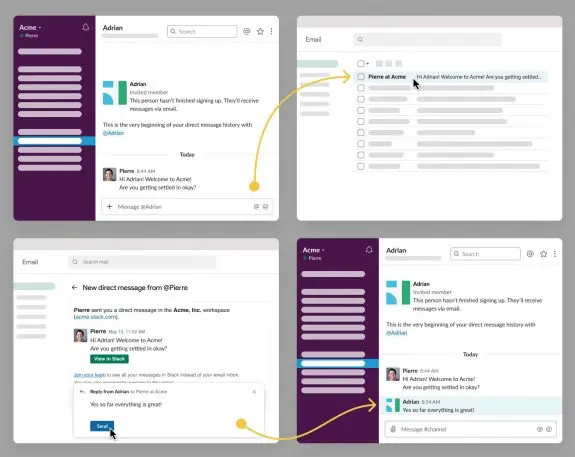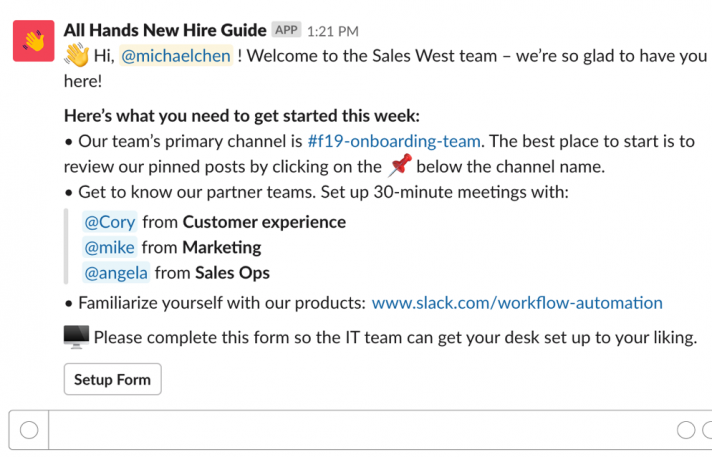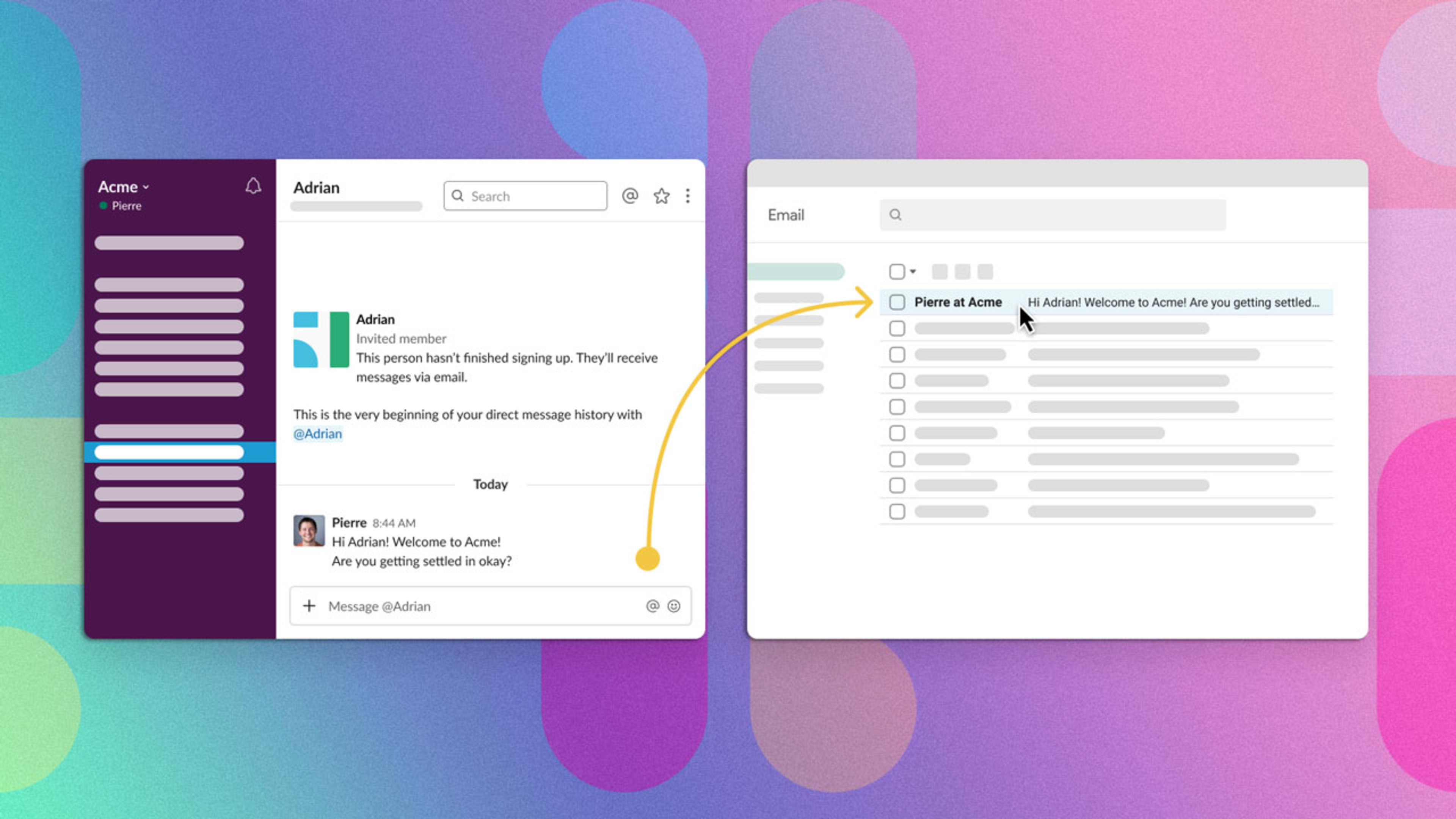Collaboration phenom Slack is continuing its effort to move from a messaging app running alongside other office software to the hub where business teams coordinate anything and everything. Its latest steps, which the company is unveiling today, will further integrate Microsoft and Google’s email and calendaring platforms into the Slack interface, providing more incentive to stay within the app. To further its case for centrality, Slack is introducing other upgrades–including further revisions to its search, which got an overhaul last year–at its Frontiers conference in San Francisco this week.
Slack, which is prepping to go public this year, has long integrated other apps and services, such as sharing files from Dropbox and displaying previews of Microsoft Word documents, Excel spreadsheets, and PowerPoint presentations. But its new bridges to email and calendar systems could further pull people into the messaging app.
Bringing in the Slack slackers
Throughout its history, Slack has often been seen as being on a mission to kill email. But despite its many annoyances, email lives on. And this round of Slack updates is focused on ensuring that folks who haven’t warmed to the service aren’t left out of collaborative work. “Today, we have users who are in Slack. But in the same organization, there may still be teammates of theirs who are just living in email,” says Andy Pflaum, Slack’s director of product management for interoperability.
Slack will now be able to bridge the gap, he says, by sending Slack direct messages or @mentions (by user name) in channels as Outlook or Gmail messages to team members who are not using the app. Those Slack holdouts will also be able to send replies, by email, that become DMs or posts in the relevant Slack channel.

Today’s news seems a small step toward that goal, with no discernible role for AI in the email aspect. But Slack will use some mild AI to suggest and set up calendar appointments based on conversations in chats.
“What commonly happens in Slack is that people are discussing a topic [and say], ‘Hey, let’s dive in deeper on this by getting together. Can we meet today on this or meet tomorrow at 2:00 p.m.?'” says Pflaum. “We’re going to be recognizing intents around meetings and tee up those users to create a meeting and help them find that time when they’re both free.”
Related: 30 Incredibly Useful Things You Didn’t Know Slack Could Do
This follows on integrations from earlier this month that allow people to sync Microsoft Outlook calendars to their availability status in Slack. Users can also receive and respond to Outlook calendar invites directly in Slack.
Speaking of schedules: Slack says it’s beginning to roll out the email bridge and will offer it to all users “over the next few months.” Smart scheduling will come “later in the year.”
Streamlined, universal search
If people are going to spend more time in Slack, they’ll need a better way to get around. For that, Slack is merging its fragmented search functions into a unified interface. It will soon do away with the “Jump to” navigation feature (Command + K on Macs, CTRL + K on Windows and Linux), which allows you to find users or channels. Instead, the upper-right search box will let you find everything: people, channels, direct messages, and files.
All search will be through a single interface. [Animation: courtesy of Slack]“It’s not uncommon that I’ve talked to somebody who’s a savvy person in general and a user of Slack, but didn’t know that [the Jump to] navigation option existed,” says Pflaum. “And now we’re bringing it all into a single search [interface].”
Slack’s other announcements are especially focused on enterprise customers. It’s expanding the beta program for the Shared Channels feature that bridges Slack installations between companies–allowing a common channel with customers, vendors, or outside agencies, for instance. Slack’s Enterprise Grid customers will be able to request an invite to the beta. “It has not been available up until now to many of our largest customers and our most complex deployments,” says Pflaum.

Today’s announcements are just the latest in a steady stream of upgrades as Slack, which claims “more than 10 million” daily users (and has a current valuation around $7 billion) aims to become the center of the workplace.
Recognize your brand’s excellence by applying to this year’s Brands That Matter Awards before the early-rate deadline, May 3.
